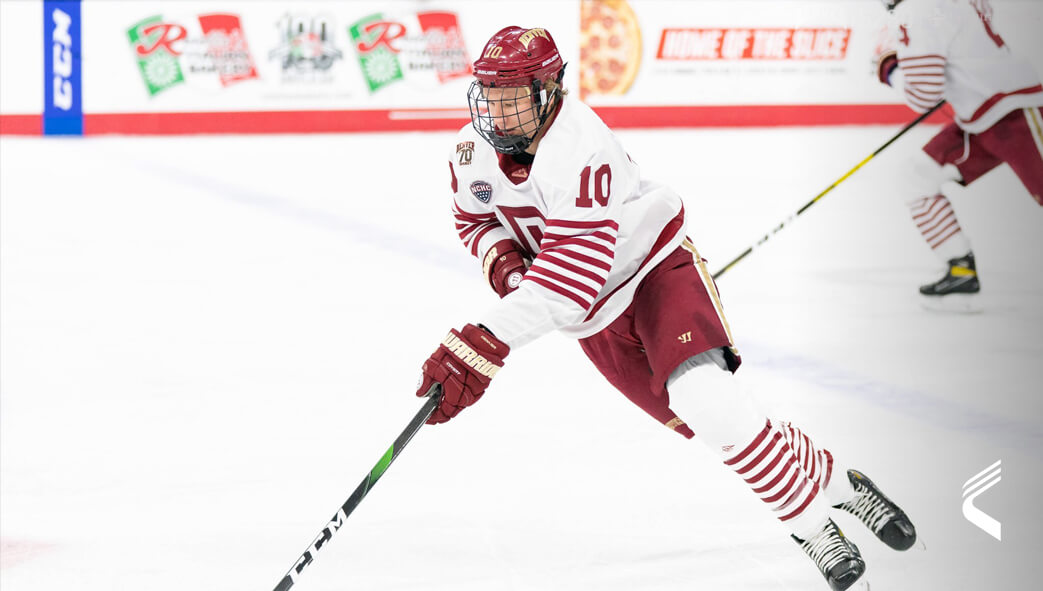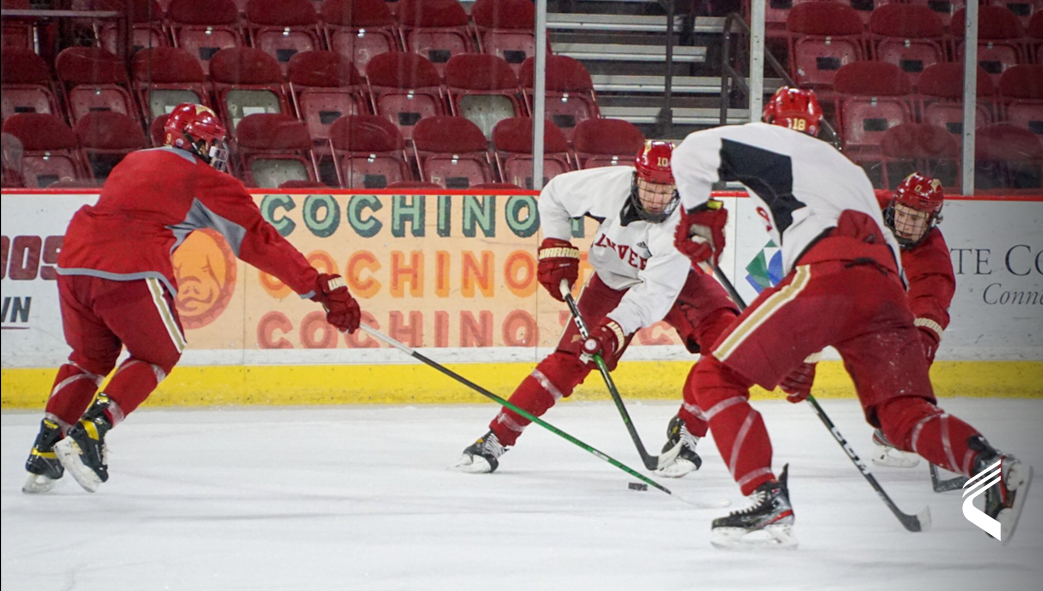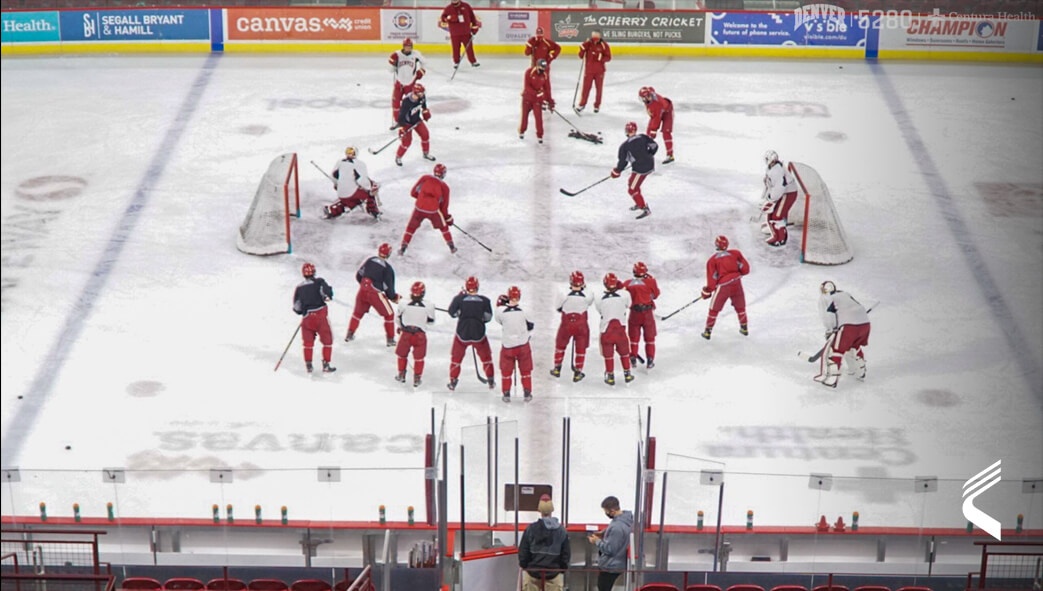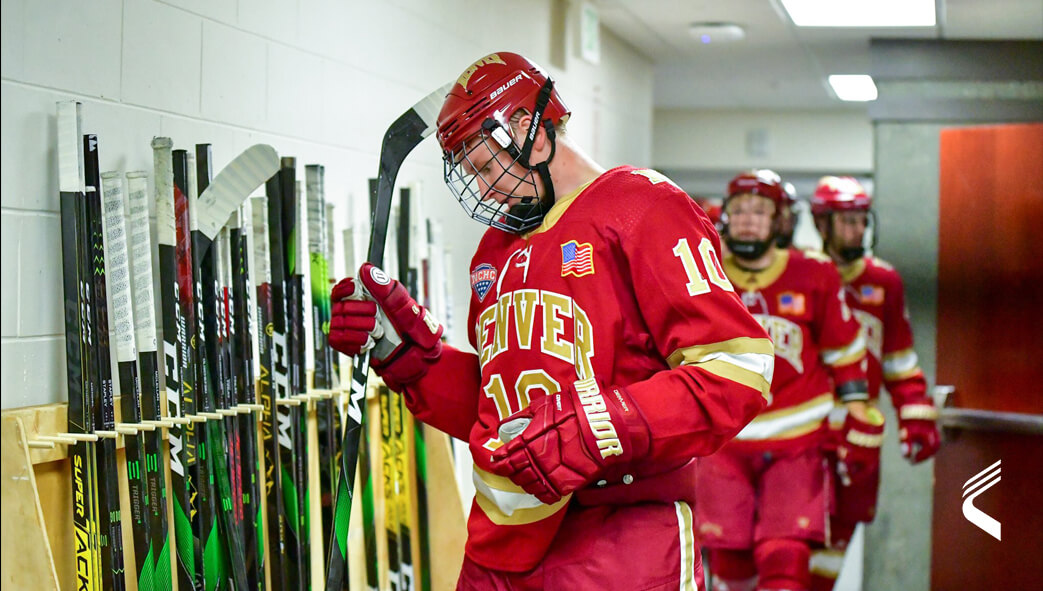University of Denver Hockey
Many hockey teams, coaches, and athletes have turned to technology to better understand the demands of the sport.
At the NCAA level, hockey is aggressive, competitive, and fast. Through technology, teams competing at this level seek competitive advantages that help take them to championships, like the Frozen Four NCAA hockey tournament.
So we spoke to the University of Denver Hockey’s Director of Sports Performance, Matt Shaw. He tells us how and why using wearable and video analysis technology provides the eight-time national champions with competitive advantages.
University of Denver Hockey, make specific reference to:
- How and why the Pioneers use wearable and video analysis technology
- Why Catapult is a particularly strong vendor for NCAA hockey teams
- University of Denver Hockey Q&A – Improving coach education and athlete outcomes
- Strategic benefits of using technology at the NCAA hockey level

How University of Denver Hockey use wearable and video analysis technology
Shaw is responsible for the athletic development and preparation of his student-athletes. He is part of a comprehensive athletic department which “together oversees eight sports programs that use Catapult”. Teams include hockey, men’s and women’s soccer, men’s and women’s lacrosse, men’s and women’s basketball and volleyball.
Shaw explains that student-athlete health and safety is paramount.
“Maintaining our program’s success is dependent on our athletes staying healthy and developing appropriately in the long term”, says Shaw. “Catapult provides a way to objectively ensure that we are managing that stress across the entire year and their collegiate careers.
“By using Catapult, we are confident that we know current training stress and use it to educate our coaches. We found that within a practice session and across the week we can elicit better outcomes whilst competing.”

But why does the University of Denver Hockey use Catapult in particular…
…“We have known about Catapult for a decade now. We closely followed Catapult’s implementation across professional and collegiate sports both internationally and domestically. So this spurred us on to implement the technology five years ago,” says Shaw.
This push for Catapult was boosted further after conversations with key hockey stakeholders within and outside the University of Denver.
“We had meaningful conversations with peers about the importance of supporting our sports programs with objective information,” says Shaw. “We spoke with individuals both in professional sport and other NCAA institutions and, so soon after, we decided to invest in supporting our student-athletes and coaches.”
Shaw received support from the NCAA Division I college’s administrators because their values are to strive for excellence, innovation, and engagement.
“I was supported by our coaches and administration in pursuing a solution that provided us objective information,” says Shaw. “Investing in Catapult leads to improved coach education related to practice design and managing stress and it also assists with improving athlete outcomes.”

University of Denver Hockey Q&A – Improving coach education and athlete outcomes
1. Where did you start with Catapult?
Shaw started using Catapult to establish performance benchmarks based on ‘standard’ practice.
“Our process started by gathering information related to what our current training week looked like,” mentions the Director of Sports Performance. “We went through a period of normalized training and then began to ask questions about what we could alter to make specific positive changes.”
2. But what are the important metrics for hockey?
“Our top three most-used metrics are PlayerLoad (measuring every force as an indicator of total stress), skating load (assessing the variability of skating stress within practice), and high-force skating (as a measure of intensity within practice).”
3. So how do you use Catapult to benefit your student-athletes?
“We also further divide these metrics to look at positional differences. More specific metrics such as explosive efforts and skating load ratio are used to provide insight into individual differences in athlete output.
“Our reports are broken up into three main categories and so can be visualized – team average, practice flow (individual drill stress) and individual data.”
4. How do the athlete and hockey-specific metrics help the coaches in their roles?
“By implementing Catapult within our coaches’ workflow, we were able to educate them because they then know how practice design aligns with stress and recovery.
“We use the data so we can create models behind different portions of the year, weekly practice stress undulation, and daily practice design.”
5. So why does the data from the technology improve the coaches?
“Coaches with the data have a better understanding of the physical stress they are prescribing through practice.
“Catapult creates an opportunity for our coaches to continue to grow because it challenges their decision making. Specifically, it provides clarity on individual drill selection toward a very specific goal, daily, and weekly across the season.”

Strategic benefits of using technology in a hockey NCAA-level environment
- Stress management and minimising injury risk
According to Shaw, stress management and the monitoring of student-athlete health and safety are key to long-term performance success.
“Our biggest goal with monitoring is providing objective practice and competition data in-season because then we know the stress our athletes go through weekly,” Shaw says.
By collecting objective data, the Director of Sports Performance can adapt practice where necessary so to mitigate the risk of injury.
“We have found value in understanding the flow of the season and how to manage the length of the regular season and postseason,” says Shaw. “So we can now control specific situations such as bye-weeks, travel implications, and unique situations such as identifying deviations within roster size or athlete availability.”
- Identifying performance variability
“Catapult has provided insight into how to manage the variability in athlete competition duration (high vs low minute athletes),” Shaw says.
So Shaw believes this has had a strategic impact on various aspects of the Pioneers’ program. “All of this extra understanding has a profound impact on coach education, performance management, and keeping our athletes at the top of their game across a long season,” he says. “When we found that our practices deviated from our intended practice design, we learned and so can reshape our practice design and thought process.”
- Expanding a coach’s relationship with the team and student-athletes
Most importantly, Shaw says his relationship with his student-athletes has grown significantly because he uses Catapult technology.
“Catapult has expanded our relationships with our teams because it allows us to make informed decisions and find solutions. It has removed the subjectivity of performance because it has provided clarity on previously unidentified performance factors.”
Ultimately, Catapult “allows us to work with our coaching staff. We can find solutions to problems, and so, make a long-term impact on teams’ and student-athletes performance and health.”
Get in touch so you can learn more about Catapult’s solutions for NCAA hockey, click here.
/// More hockey content for you
- Hockey-specific: Inform key decision with objective data
- Solution: Catapult’s wearable solution
- NCAA user story: University of Maine
- Solution: Catapult’s video solution
- Webinar: Using Wearable Technology in Ice Hockey